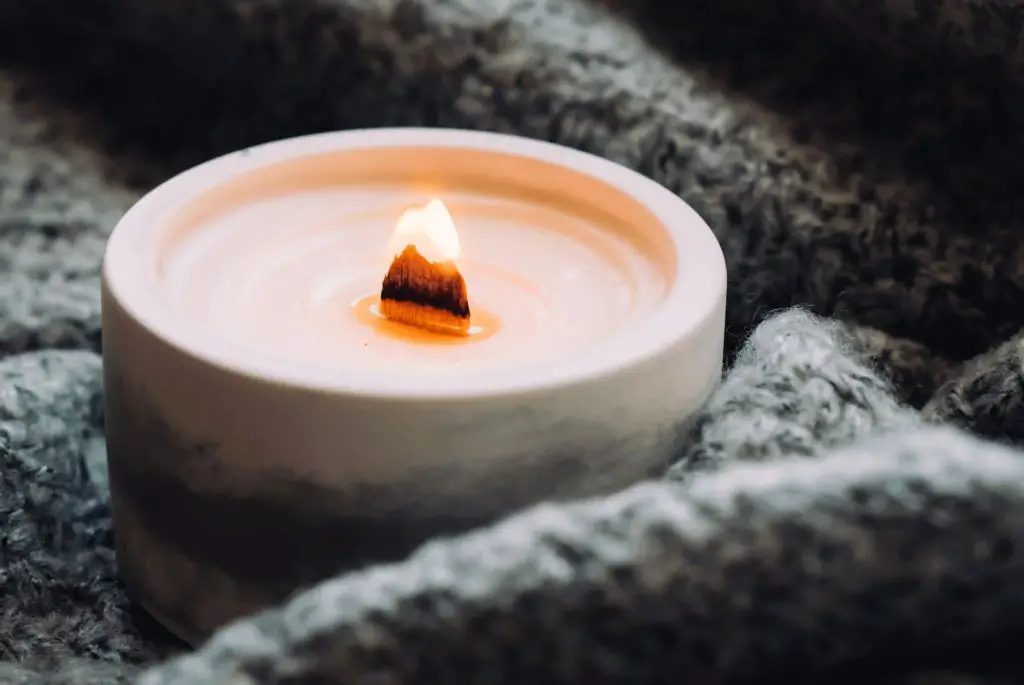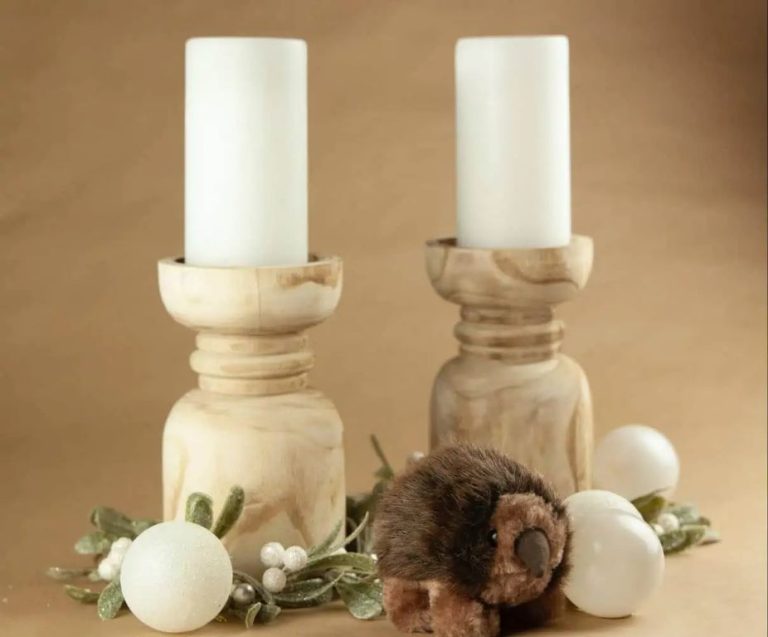Is Wooden Wick Better Than String Wick?
A candle wick is the component of a candle that enables the fuel (wax) to be drawn into the flame through capillary action, allowing the candle to burn. The wick’s primary function is to deliver the melted wax to the flame in a slow, controlled manner so the candle burns evenly and cleanly without smoking or flickering. Wicks are traditionally made from braided cotton fibers, though many modern wicks incorporate other materials like wood, paper, and zinc cores for various functional benefits. The right wick is essential for optimal candle performance based on wax type, candle shape and other factors. Wicks are the key to harnessing the chemical energy in wax and releasing it slowly as flame and heat. This makes candle wicks integral to candles’ ability to provide light and scent ambiance.
## Materials Used https://candles.org/elements-of-a-candle/wicks/
The most common materials used for candle wicks are cotton, wood, paper, and blends of natural and synthetic fibers. Cotton has traditionally been the most popular wick material. Cotton wicks are made from thin strands of cotton that are braided or twisted together. They are affordable and burn cleanly.
Cotton wicks are commonly used in container candles. They absorb wax well to provide an even burn. The width of the wick should match the diameter of the candle container. Wider containers require wider wicks so that the wax can liquify evenly across the top as the candle burns. Cotton wicks come in different ply or strands based on the candle diameter.
Wooden Wicks
Wooden wicks are made from wood fibers, often bamboo (Source). The fibers are processed into threads and woven together to create a wick. Unlike traditional cotton wicks, wooden wicks are flat and stiff. The wood fibers provide structure and the capillary action needed to draw wax up the wick. Wooden wicks have some unique properties compared to regular wicks:

Burning Properties
Wooden wicks and cotton wicks burn differently due to their material composition. Cotton is very flammable and burns quickly, while wood burns slower and more steadily.
Cotton wicks tend to burn hotter, faster, and brighter than wooden wicks. The flame on a cotton wick candle can get quite large and billowy. This makes cotton wicks good for lighting candles quickly, but the rapid burning can tunnel down into the wax rather than melting the top layer evenly (Makesy).
Wooden wicks don’t burn as fiercely. They produce a lower, warmer flame that melts wax more slowly and evenly. The slower burn helps prevent tunneling, allowing wooden wick candles to pool wax better. Wood also doesn’t burn away as fast as cotton, so wooden wicks don’t need to be trimmed as often (Spoken Flames).
Scent Throw
Wooden wicks are generally considered superior to cotton wicks when it comes to dispersing fragrance while a candle burns. The porous nature of wood allows it to absorb and release scent better than tightly woven cotton fibers. According to Makesy, wooden wicks release fragrance evenly as the candle burns, while cotton wicks tend to trap some fragrance in the melted wax pool.
Spoken Flames Candles notes that a wooden wick’s wider flame enables more wax to melt at the top, releasing more fragrance. The wood also crackles as it burns, which helps propel scent. With a cotton wick, only the small flame is unlocking fragrance from the wax. Overall, wooden wicks provide a stronger, more consistent scent throw than cotton.
Crackling Sound
One of the main benefits of using wooden wicks is that they produce a pleasant crackling sound as they burn. This crackling occurs because of how the wood fibers in the wick interact with the wax and flame.
As the flame melts the wax, the liquid wax travels up the wood fibers by capillary action. When the wax reaches the flame zone at the tip of the wick, the liquid wax trapped in the wood fibers heats up and turns to steam. This steam is trapped within the wood structure momentarily until the pressure causes it to burst out, creating a small popping or crackling sound.
The natural porous structure of the wood contains small pockets that capture bits of water and wax vapor, leading to this repeated buildup and release of steam pressure. So the distinctive crackle happens continuously throughout the burn time. This occurs with wooden wicks but not cotton wicks, which don’t have the same porous wood structure.
Many candle enthusiasts enjoy the soothing, fireplace-like ambiance created by the crackling wooden wick. It’s one of the main reasons wooden wicks remain popular choices for scented candles.
Wax Pooling
Wooden wicks typically allow for more even wax pooling compared to cotton wicks. As the wooden wick burns, it slowly smolders and warms the entire wax pool. This helps the wax melt evenly across the top of the candle. Cotton wicks tend to create a hotter flame that melts the wax directly surrounding the wick, but doesn’t distribute heat as evenly across the candle’s surface. According to Baisun Candle Co., wooden wicks release fragrance more consistently as the wax liquefies at an even tempo. With cotton wicks, the wax around the wick melts quickly, releasing aroma in short bursts1. The wooden wick’s slower burn allows wax to melt uniformly, dispersing fragrance steadily over time.
Smoke and Soot
When it comes to smoke and soot production, wooden wicks tend to produce more than cotton wicks. As the wood burns, it will naturally create some smoke and soot which can dirty the glass and wax pool (Source). Cotton wicks on the other hand, especially when trimmed properly for the wax being used, produce very little soot and smoke in comparison (Source). The natural materials in wood wicks mean some smoke is expected, but if producing excessive soot, it could be a sign the wick is too large for the wax pool.
In summary, cotton wicks tend to produce less smoke and soot than wooden wicks in most candle making situations. Properly trimming the wick and matching it to wax type can minimize soot from either material, but wood will likely still produce more.
Cost
When it comes to price, cotton wicks are generally the most affordable option for candle making. They can be purchased in bulk quantities at low cost from many candle supply vendors. Wooden wicks, on the other hand, are more expensive on a per wick basis. The wood core and special coatings add to the manufacturing complexity and cost. According to one source, wooden wicks may cost 5-10 times more than basic cotton wicks depending on the size. For high volume production, this difference in cost can add up.
However, supporters of wood wicks argue that you get what you pay for in terms of performance and ambiance. The crackling sound and strong scent throw create a more engaging experience that keeps customers coming back. Wood wicks may allow candle makers to command a higher price for their premium candles, offsetting the higher material costs. Small batch and artisanal candle makers tend to favor the wood wick for its artisanal, handmade appeal.
So while basic cotton wicks are less expensive for high volume and low cost production, wood wicks offer performance advantages that allow candle makers to turn them into a value-added feature.
Conclusion
Overall, wooden wicks appear to have some advantages over standard string wicks for candles. The main benefits of wooden wicks include:
- They create a pleasant crackling sound as they burn, adding sensory appeal.
- They tend to produce less smoke and soot, resulting in cleaner burning.
- They can allow for better wax pooling and more even burning.
- They may provide a stronger scent throw in some types of wax.
The main downsides are that wooden wicks can be more expensive than string wicks, and some users report issues with wooden wicks going out frequently. These cons may make them unsuitable for some applications.
For most home candle enthusiasts looking to enhance their candle experience, wooden wicks are worth trying. The crackling sound and cleaner burn make them an interesting alternative to standard wicks. However, those making candles professionally may want to weigh the pros and cons carefully for their specific situation before switching.






